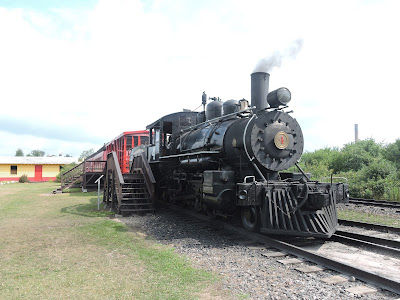 |
Indiana Dunes Sunset (Chicago in background) |
We’re camped at Indiana Dunes State Park,
a great campground. Mary is struggling with her RA today and it poured rain in
mid-afternoon, forcing us to have a fairly quiet day. There is a beautiful
beach on Lake Michigan here and from the beach you can see the industrial
section of Gary, Indiana. In the morning I took a hike along the dunes with a
ranger. He explained the natural lifecycle of the dunes. What I found most
interesting is how the dunes as they age and move, eventually cover the trees
with sand and then about a thousand years later, those trees start to reappear
as the dune moves. The end of this hike was at Beach House Blowout. A blowout
or parabolic dune is carved out of a dune if the vegetation dies and the wind
starts sweeping the dune in a circular fashion instead of straight across
(which forms parallel dunes). Here the sand was well exposed, rather than being
solidly covered with grasses and later trees. From the top, I could see two
other major dunes each just shy of 200 feet above the lake level – covered with
trees. The sand here comes from the northern part of Lake Michigan and is
deposited in a layer now 200 feet deep into the water. A relatively quiet day –
tomorrow we start heading west. We plan to stop at Starved Rock State Park in
Illinois for a short hike and Amana Colonies for a German meal.
If you'd like to see more pictures, go to youtube for the 5 minute narrated video.
If you'd like to see more pictures, go to youtube for the 5 minute narrated video.

























